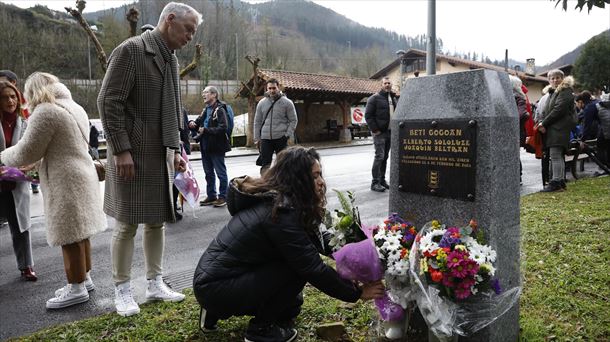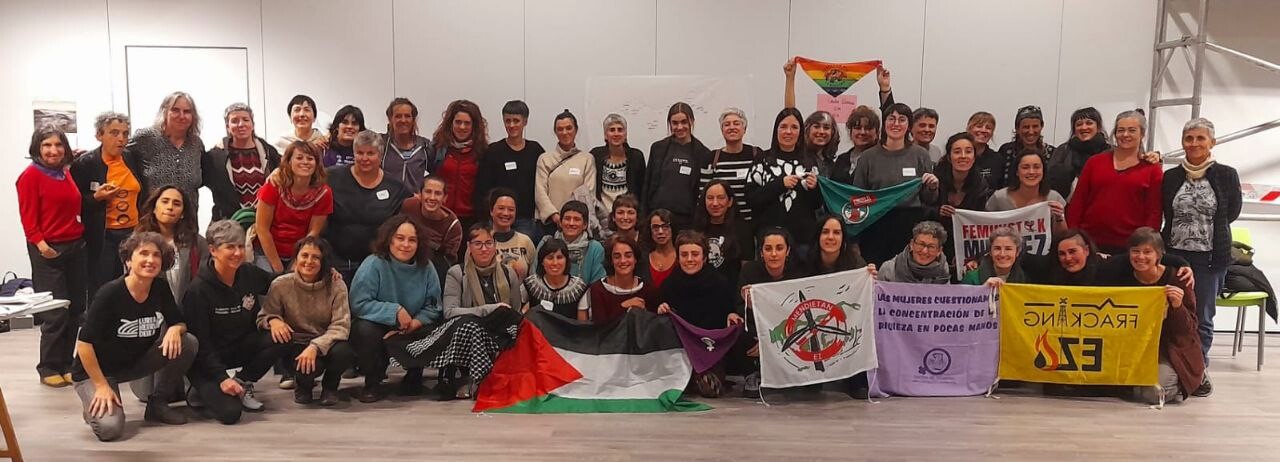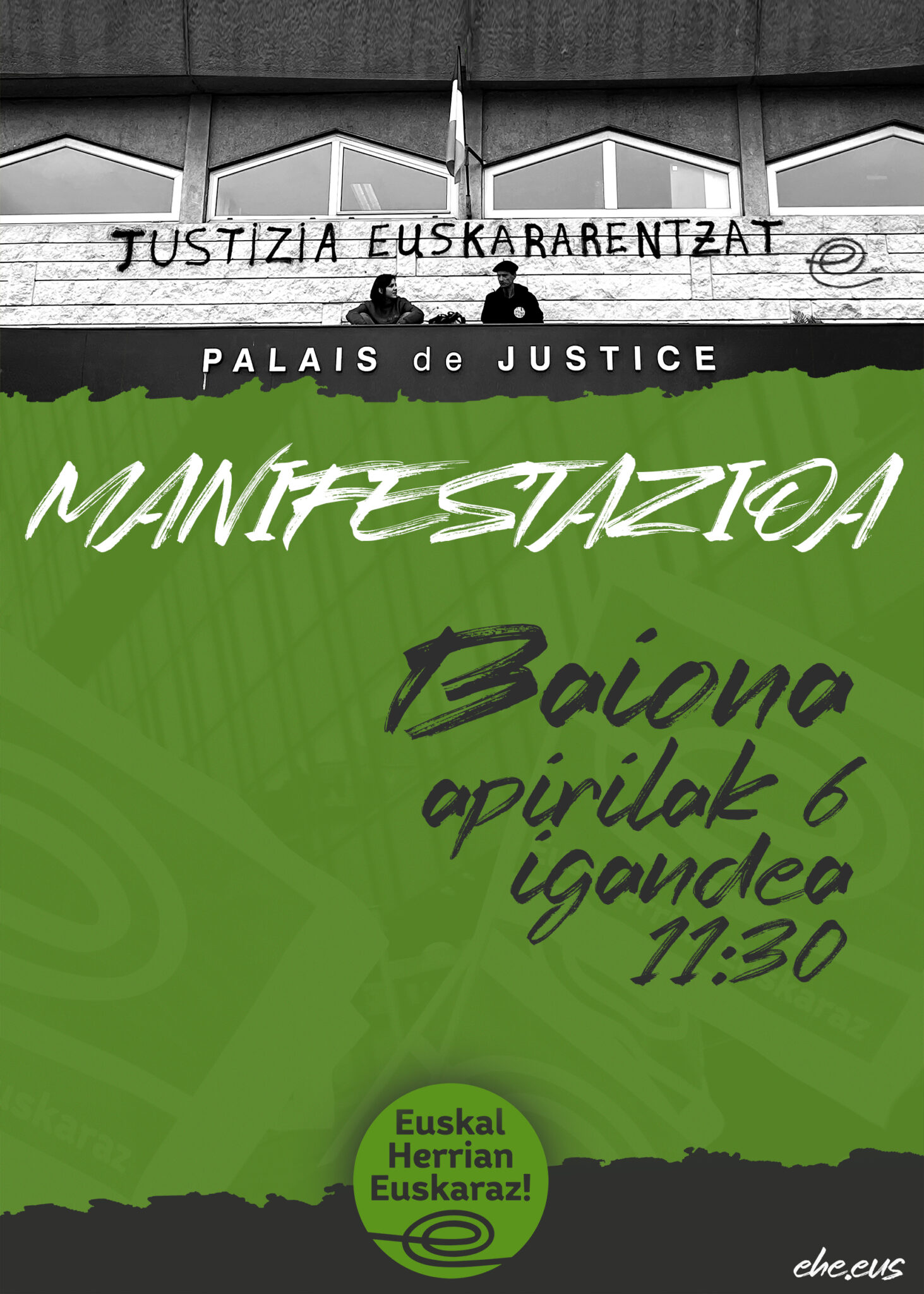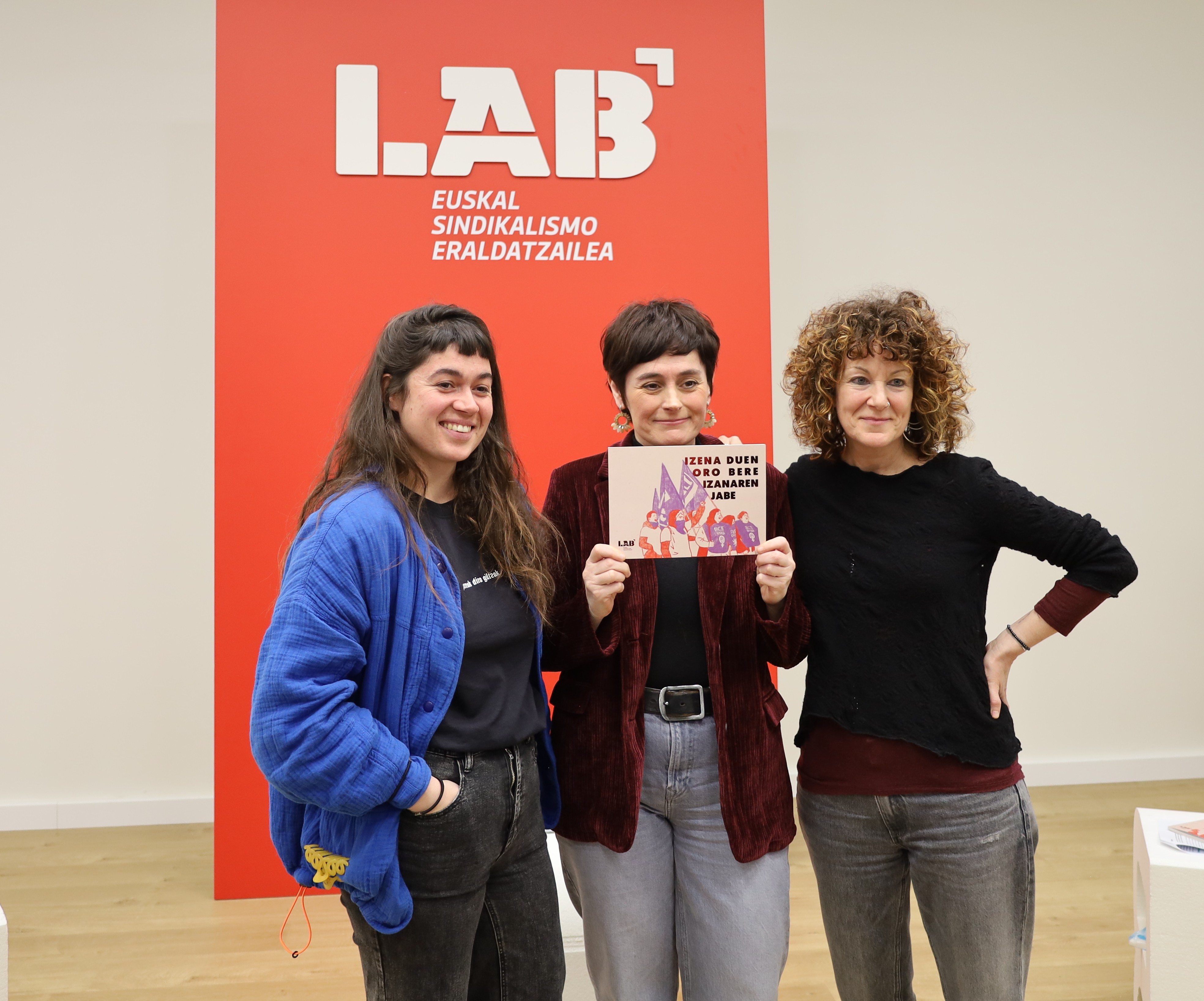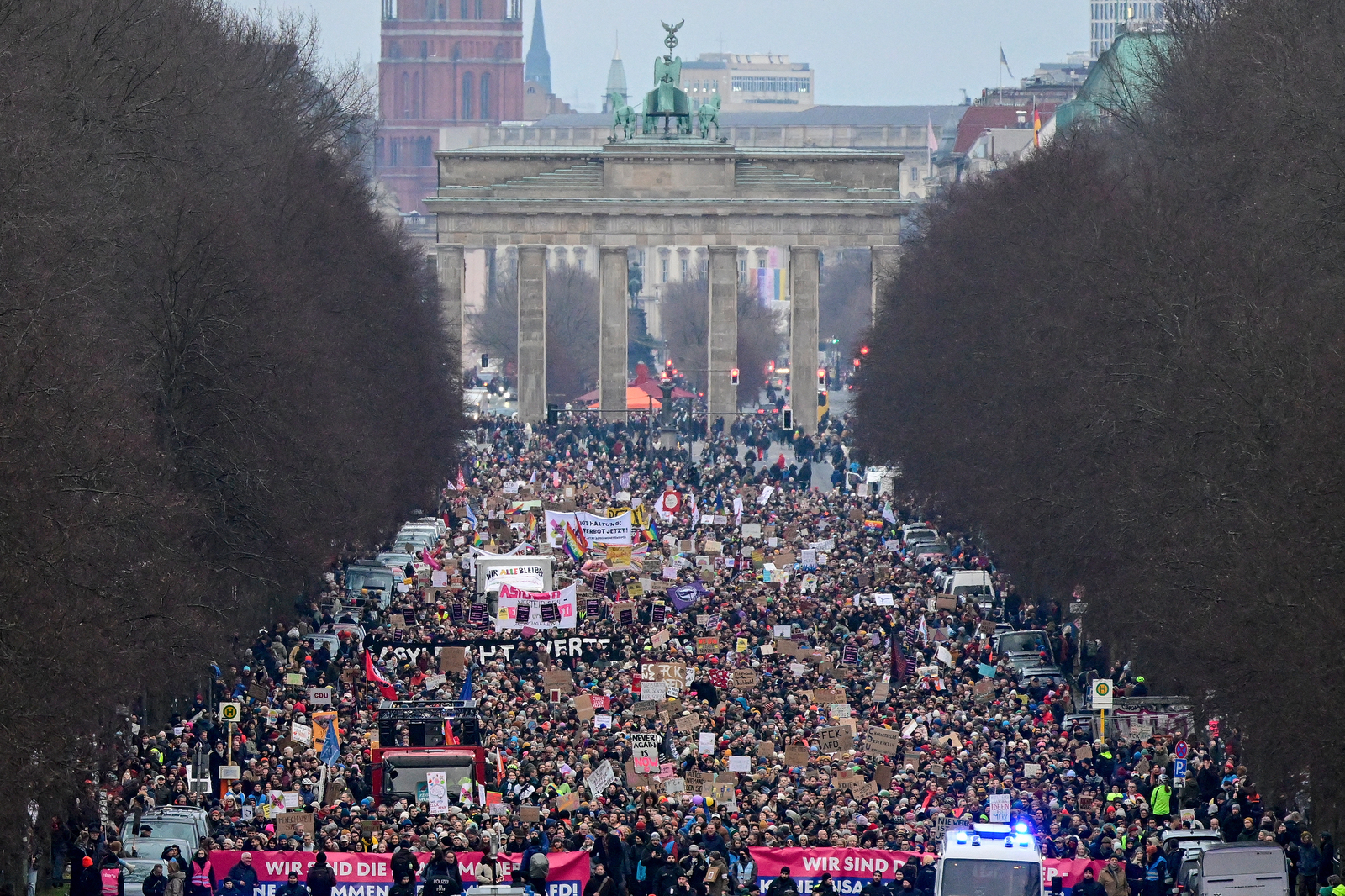"Conflicts are necessary for transformation"
- The Joxemi Zumalabe Foundation has published a leaflet on conflicts. Three years ago they began to reflect with different agents and people on the ways of fighting popular movements. We have talked to Marta Luxan, a member of the Joxemi Zumalabe foundation, about the contents of the leaflet and about the "tool" of the conflict in general.

This is the result of a process that you started a long time ago. In 2012, you focused your attention and reflection on the dynamics and internal life of the collectives. From there came the book and the DVD “No to the stone that circulates”. Now, you've paid more attention to context and work outward.
When we started the line of reflection within Zumalabe, we began to reflect and debate about the inner lives of the collectives and the collectives. We thought we were looking little at that dimension. But then it seemed to us that there is also the dimension of the context. We talk about the triangle: it is very important to look at both the political project and each of the people that make up the group and the context.
It seemed to us that people already placed us there, “those who look inwards” (laughs). And we have other concerns. At the end of this phase, we said: “Let’s study the ways of fighting.”
Nor does this tendency to differentiate between exterior and interior reveal our dichotomous binary thinking, understood as two independent dimensions?
Totally. We stress the importance of that inner life, because what we do abroad is conditioned by that internal dimension, and vice versa. Maybe that's how we define them or classify them to move forward, but it's not one thing or another, they're connected.
In 2015-2016 you started to reach this external dimension. Conflict is one of the four ways of fighting you've looked at.
Together with ARGIA we have made two videos, we have worked the alliances. We have now drawn up a brochure on conflicts. We have had a great deal of discussion among ourselves, sometimes we have not been able to reach agreements, we have had times of deadlock, but that is where the result is.
When we decided to work on the forms of struggle, we decided to focus on the four ways: disobedience, alliances, conflicts and violence. We do not think that the forms of struggle are exhausted there or that they are the most important, but at that time we had the interests. We have become entangled in terms of violence, we have not seen how to get something out of the street because among us there are also many knots that have not been released.
They have now taken out the leaflet on the conflict. How do you understand the conflict?
We are talking about conflicts that arise around social inequalities that generate imbalances in society. It seems to us that the objective of some popular movements is to generate conflicts to fight these inequalities, to transform society. We are talking about that sense of conflict. For example, what can be created about employment conditions or what is being done about refugees.
It's not a guide to conflict, it's a tool to think about conflict. This work of reflection must be done by each of the collectives.
"He asked us. “How can we make a contribution that can be useful to others?” And we decided to imagine a conflict to try to identify the most important questions in decision-making from the source to the end."
You make a proposal to “rethink conflict.”
There are many ways to understand conflicts. We understand it as an opportunity for transformation, not something that must be avoided, but something that is there, an instrument of struggle, that we must use. But we came up with a question. “How can we make a contribution that can be useful to others?” And we decided to form a conflict to try to identify the most important questions in decision-making from the source to the end. These are the ones that have touched us the most, but each one will have to adapt to its scope and to concrete conflicts. We haven't brought to the bookstore just the things we think are safe. We have also raised doubts, which have led to a debate between us or which have made us feel uncomfortable.
It seems to us that sometimes, among other things, because we are at a frenetic pace, we don't take time to think about some things. To some of us, at least, it has happened.

You have divided the proposal into four sections.
The first would be the starting point of the conflict, the second the process or the trajectory of the conflict, the third is the escalation of conflicts. I do not know whether we have succeeded in the term, but what we mean is that there are many phases in conflicts and we have called for escalation at that stage from one phase to another. The last part is the consequences of the conflict. The consequences appear throughout the process, but when a conflict closes, closes, or changes of intensity, we almost take a space to learn some lessons about the struggles we've experienced.
We didn't want closed formulas, we don't want them. There are some questions for the starting point that we would like you to help us think: “What is the reason for the conflict? What is it based on? Where are we? What are the power relations between the parties to the conflict? What are the objectives of the strategy? What is the context?...”. Other questions: “What resources do we have? What consequences will the conflict have?”
Focusing on the process and the trajectory of the conflict, we raise more concerns. Do you propose conflict in terms that have been decided upon will bring people together? Also in the long term? In fact, we sometimes limit ourselves to a short term. It is important to reflect on who can participate in the conflict and who cannot. We have already mentioned before that the exterior and the interior are connected and in this section we have tried to take into account these two dimensions: Are these ways of developing conflict fuelling our internal cohesion or vice versa? And what economic, psychological or political repercussions do they have on their members? On another level, we've sometimes seen the marginalized at the center of the discourses of conflict, but then actually those bodies aren't there, and that's what we worry about. It's not they who are building the speeches.
"At the moment, the idea that is very widespread among us is that conflict is something to be avoided. We are on the other side. We understand that it's a tool for transformation, which extends the possibilities."
In popular construction in general, we have had a hegemonic paradigm for decades: conflict is good a priori. Has a more negative view of the conflict developed in recent years?
There has been a change, we put it in the brochure. The idea that is now very widespread among us is that conflict is something that must be avoided. We are on the other side. We understand that it is a tool for transformation, which opens up opportunities. Conflicts are necessary for transformation. It is true that conflicts have also, or may sometimes have, harmful effects.
You work or have worked on four ways of fighting: disobedience, conflict, alliances and violence. What is the relationship between them?
There is linkage. For example, when we pose a conflict, we create alliances with others. Or not. But you have to think about who and in what terms we're going to build alliances, and on the contrary. With violence and conflict: in what we have called scaling, at times it seemed that the only way to escalate the conflict was to harden the confrontation. There you can also rethink some things. There are links between all forms of struggle.
You have taken out a leaflet that is the result of a process and the result of work with others. What use have you given him and what will you give him for the future?
On 27 June we presented the leaflet at the Kaxilda de Donostia. We have put it for sale in several bookstores and it can be downloaded from the web. Maybe we'll make some more presentations.
In any case, we believe that the proposal should take its own route. Depending on what seems to almost all the collectives, new questions will arise. It's not a finished product. We would like to know whether it brings something and if it does not, we would also like to know.
What other projects do you have for the future in Joxemi Zumalabe?
I don't know if we're going to do anything about violence. Nor do we know whether it is time to propose something, or whether it has to make any proposal that is ours. It is difficult to talk about this issue at this time without falling into the usual dichotomies.
We have in our heads other things that we have been working on for years, because things have changed a lot since then. The use of social networks, for example. What about the debates that take place in networks, what kind of relationships do they develop, how do they affect the lives of the collectives?
Looking ahead to the fall, our intention is to make a couple more videos about alliances. And then we have to decide whether we're going to get back to the work of disobedience, because in its day we're working on something, or whether we're going to address the issue of social media.
Larunbatean pertsona talde batek Tolosaldeako Kontseilu Sozialistako kide bati eraso egin ziola salatu dute. Azaldu dutenez, "faxistei aurre" egin zien propaganda jartzen ari zirela, eta piperbeltz espraiarekin zipriztindu zuten.
This wedge that the announcement on the radio Euskadi to replace the bathtub with a shower encourages the commencement of the works in the bathroom of the house. A simple work, a small investiture and a great change are announced. There has been a shift in toilet trends and a... [+]











